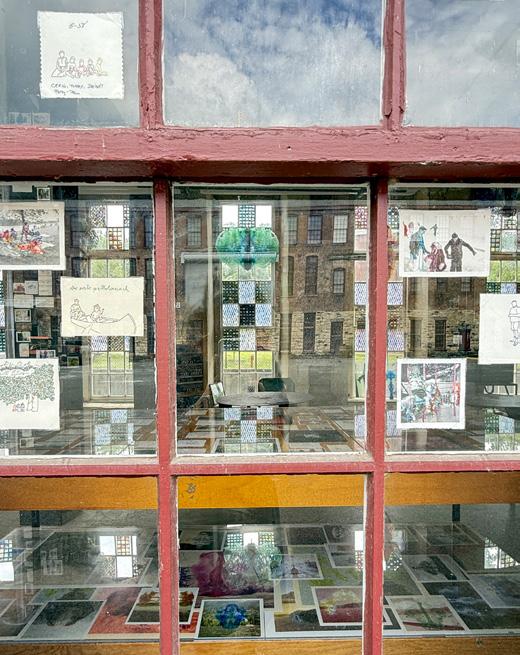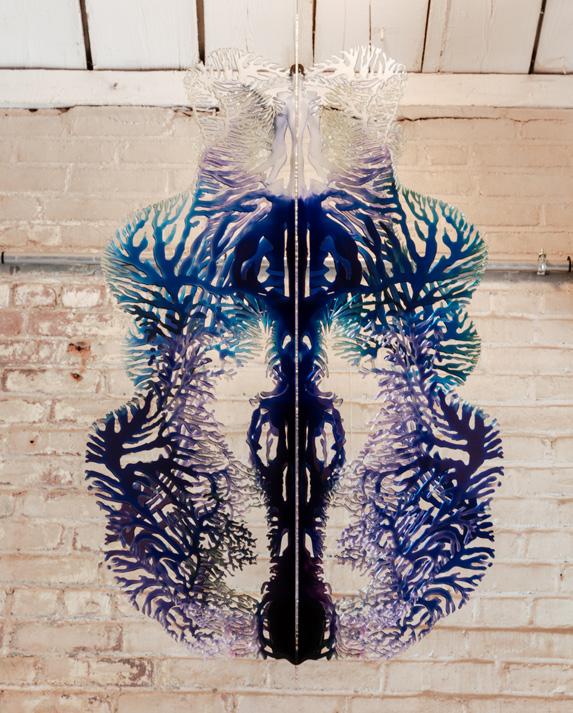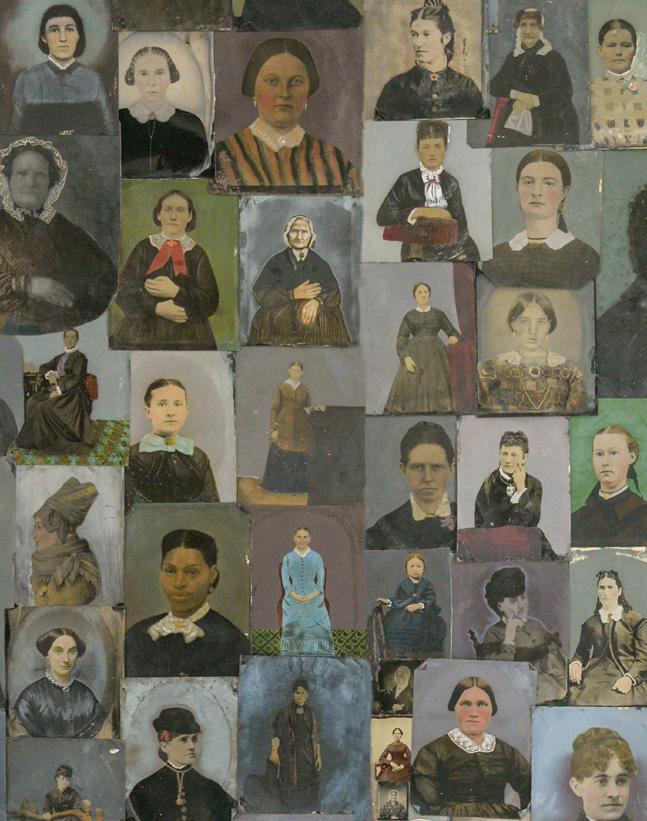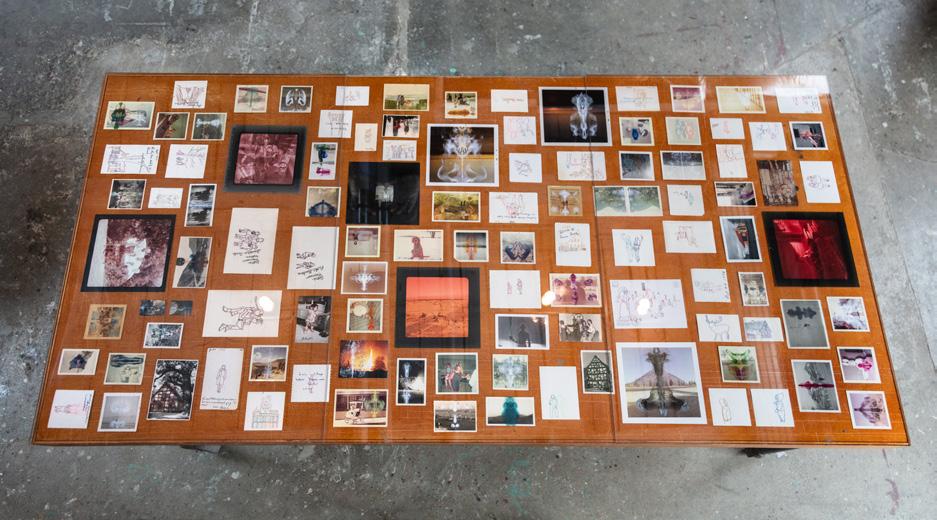Intended to be viewed from the exterior (and open when the artist is on site)
- - - - Transporting the contents of her studio from Los Angeles to North Adams, Randi Malkin Steinberger has created an installation at MASS MoCA that functions simultaneously as an occasional workspace, archive, and cabinet of curiosities. Museum visitors can peer through the many windows of Building 6.1 to get a sense of the artist’s world.
- - - - The Archive of Lost Memories holds a treasure trove of Steinberger’s own photographs alongside images found at estate sales, antique markets, and on eBay.
Florence and Rome, where she studied photography. She frequented photo booths, retrieving torn and discarded photos that otherwise would have been lost to the street or the trash bin. Now protected in cellophane, these small prints are taped to a small window facing Courtyard D. These works ask questions that still resonate with Steinberger’s current practice: What does it mean to destroy or, in the digital era, delete an image? What histories have been lost? How might time alter our perception of what is worth saving? And how will digital images survive for future generations to find?
- - - - Throughout Steinberger’s installation, nearly every surface is covered by photographs the artist rescued from
“So many of these pictures are faded and out of focus. So are the expressions of those days that have gone by. Though indistinct and hazy, these photographs bring back to me those days, and help me to touch up the blurred images of my mind.” unknown
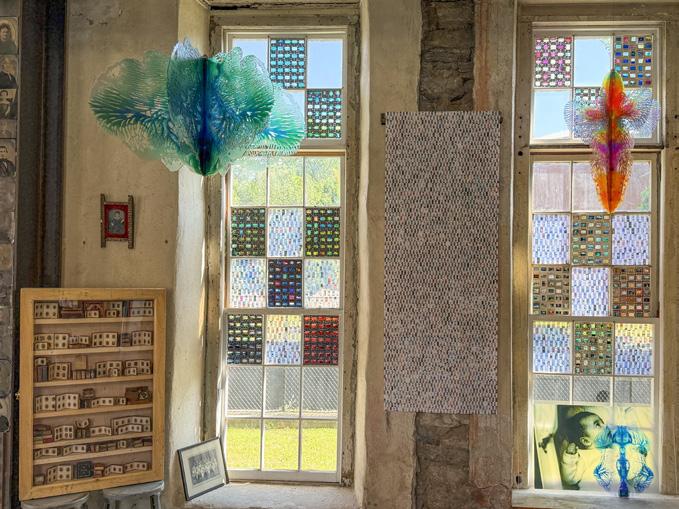
Steinberger gives these abandoned photographs new life by arranging, categorizing, and transforming them with materials such as thread and nail polish. Salvaging once-precious, now-forgotten moments, she prompts us to imagine the stories these images might tell.
- - - - Steinberger’s engagement with found images began in the 1980s in
obscurity. In preserving these humble images, she imbues them with the gravitas usually reserved for traditional archives. Featuring tintypes, snapshots, slides, and digital photos, Steinberger’s collection also provides a partial timeline of photographic advancements.
- - - - Like any archivist, Steinberger classifies images, and on several shelving units, she has organized tintypes by subject—with women, men, and babies grouped separately. Invented in the mid nineteenth century, tintypes required professional photographers but were fast to produce, inexpensive, and became widely popular. In the twentieth century personal handheld cameras allowed amateur photographers to commemorate everyday moments as well as monumental occasions. With this shift in technology, vernacular imagery became ubiquitous, and photographs less precious, much like the digital images we take with the camera in our phone.
FIG. 01 : Installation view of The Archive of Lost Memories, 2025. MASS MoCA, Building 6.1.A
FIG. 02 : Controluce, 2022. Nail polish on vernacular photo. 3 1/2 x 3 1/2 in.
FIG. 03 : The Third Kiss, 2024. Cotton thread, vernacular photo. 4 x 2 3/4 in.
FIG. 04 : Story Board Rainbow, 2024. Cotton thread, vernacular slides.
FIG. 05 : Detail of Everyday Phone Calls, 2016-ongoing. Inkjet print on paper.
- - - - A multitude of found snapshots are displayed in the windows, vitrines, and on tables in Steinberger’s installation. Most are embellished with the artist’s hand-sewn stitches. With thread she adds color, tracing outlines of anonymous figures. She often fills in any handwriting, memorializing names and notes, which may be the only remaining identifiers of a life once lived.
- - - - Steinberger also plays with a large collection of photographic slides abandoned by strangers. Organized by subject, hue, or sensibility, and hung in grids in the windows, images from family vacations and educational lectures can be viewed from inside or outside the space. Stitched together the unassuming panels of celluloid take on the effect of stained glass, casting colorful reflections on the walls and floor in the daylight.
- - - - Steinberger imparts this sense of wonder or mystery to all of her work. On many photographs, she adds what looks like a Rorschach blot. Applying nail polish to the surface of the image, she folds it, applies pressure, then peels the sections apart to create a mirrored shape.1 Partially transparent, the form floats over the original like a secret message. By layering this effect on top of a photograph, Steinberger emphasizes the enigmatic quality of the found image, inviting us to lean into the mystery of who took it, and why. For Steinberger these Rorschach shapes also reference the Fata Morgana, 2 a type of mirage that appears over the distant horizon. Once thought to be the work of a sorceress’s magic, for Steinberger, the magic lies in what the viewer can
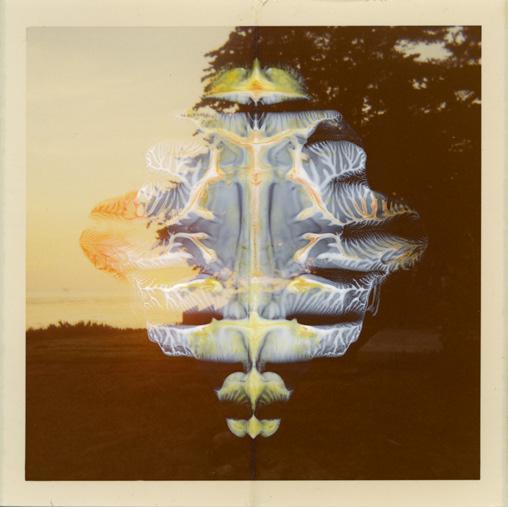
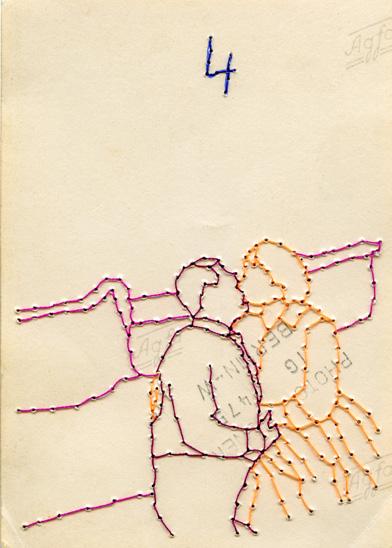
imagine. Pushing the idea of the mirage further, she translates the Rorschach splotches into three-dimensional sculptures that hang from the ceiling. Isolating the nail polish blot from the photo beneath, and reproducing the image in laser-cut plexiglass, Steinberger imagines that a trace of the original photo is still there, hovering in the air like a mystery, inviting any number of interpretations.
- - - - Steinberger’s archival impulse is not reserved only for the found image; it also extends to the documentation of her own life. With a camera in everyone’s phones and tablets and infinite cloud storage, we can record nearly every moment of our lives. Everyday Phone Calls (2016–ongoing) features nearly a decade’s worth of the artist’s call logs from her iPad. Steinberger adheres to a structured yet intuitive rule for capturing these records: when a new name appears at the top of the call list, she opens her FaceTime app and takes a photo, pairing
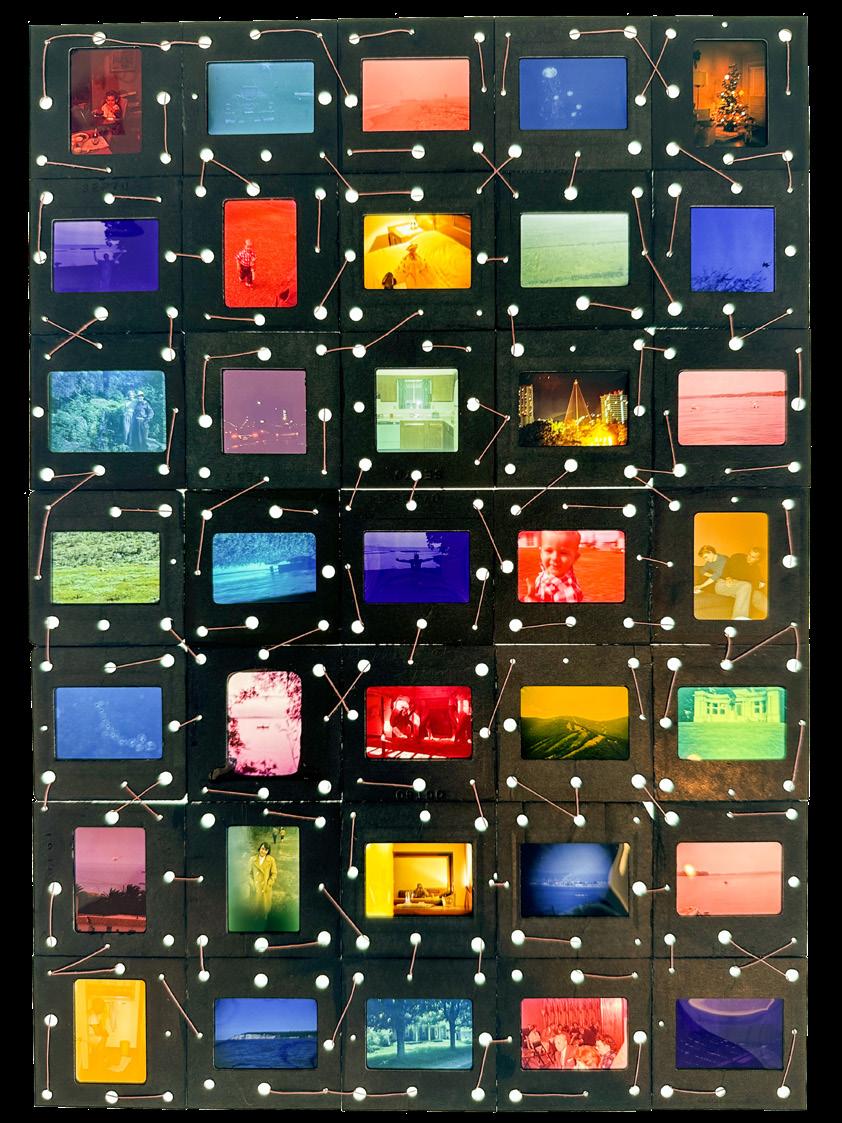
the names and numbers with an image. Printed on hanging paper scrolls, some iterations remove the call log and leave space between each image, recalling the warp and weft of textiles. A dense and vibrant pattern emerges from an endless repertoire of everyday moments, that, while usually unconsidered, reflect the fabric of daily life through a chronicle of family check-ins, work rhythms, and calls missed or returned.
- - - - In 2020, during the isolation of the pandemic, Steinberger began using the iPhone’s Live Photo feature to record intimate moments with her family and to mark time in the endless stretch of quarantine. She exported and compiled these short clips, arranging them into extended video diaries that capture the ephemeral encounters—so easily forgotten—that are the stuff of life. One features every photo the artist took over a 3-month period. Another records every animal that crossed her path.
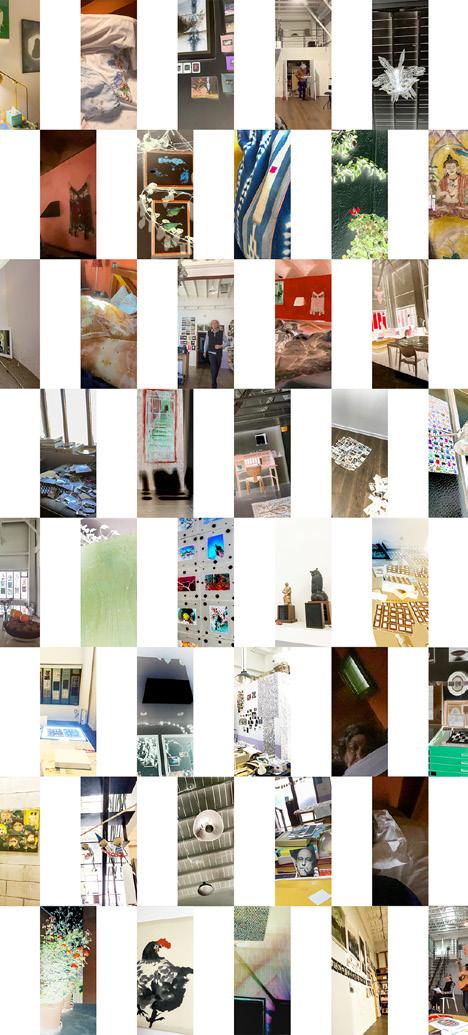
- - - - Steinberger values the little moments, and through her practice finds meaning and beauty in the quotidian acts of living and making, and in imagining other lives lived. With The Archive of Lost Memories, she invites us to consider the moments people memorialize with imagery, along with the voyeuristic fascination to contemplate the lives of others.
1 The decalcomania technique is often associated with the surrealist painter Max Ernst who tapped into the unconscious mind to create dreamlike images.
2 Light and atmospheric conditions cause these optical illusions, but in Arthurian legend, Morgan le Fay, the medieval sorceress fairy, was believed to produce these mirages.
RANDI MALKIN STEINBERGER is a photographer, multi-disciplinary artist, and filmmaker. A Chicago native, Steinberger studied art history and photography in Florence. She collaborated with renowned Italian artist Alighiero Boetti on two books: Accanto al Pantheon (1991), published by Prearo Editions in Milan, and Boetti by Afghan People: Peshawar, Pakistan, 1990 (2011), published by RAM Publications. Since 1993, Steinberger has lived and worked in Los Angeles, where she shares a studio and collaborates with her husband Harlan Steinberger, founder of the recording label Hen House Studios. Her artist books are in the collections of the Museum of Modern Art, Whitney Museum of American Art, Getty Research Institute Special Collections, Art Institute of Chicago and Museum of Contemporary Art, Chicago.
Installation
of
Detail views of Randi Malkin Steinberger’s The Archive of Lost Memories, 2025. MASS MoCA.
